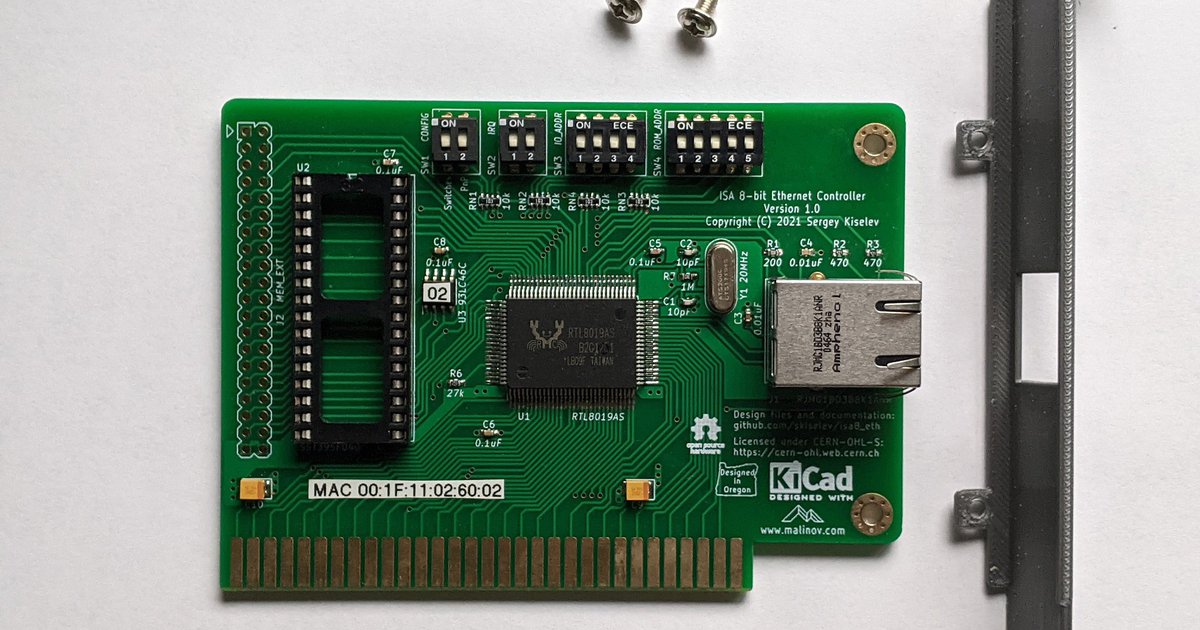For those of you looking for an 8 bit Ethernet card, check out this NE2000 based card that works in an 8 bit slot:

 www.tindie.com
www.tindie.com
The price is more than the occasional steal you will find in the bargain bin at a swap meet, but it's a newly designed card made from new parts. And best of all, it's going to work out of the box as is - no playing "will it work" roulette with 35 year old cards.
I bought one and tested it on a PCjr with an ISA bus adapter. Sergey Kiselev has a few open source projects out there and has been an active supporter of VCF and vintage computing in general.
-Mike

ISA 8-bit Ethernet Controller by Weird Electronics on Tindie
ISA 8-bit Ethernet Controller can be installed in IBM PC/XT and compatible computers to add Ethernet network connectivity
The price is more than the occasional steal you will find in the bargain bin at a swap meet, but it's a newly designed card made from new parts. And best of all, it's going to work out of the box as is - no playing "will it work" roulette with 35 year old cards.
I bought one and tested it on a PCjr with an ISA bus adapter. Sergey Kiselev has a few open source projects out there and has been an active supporter of VCF and vintage computing in general.
-Mike
